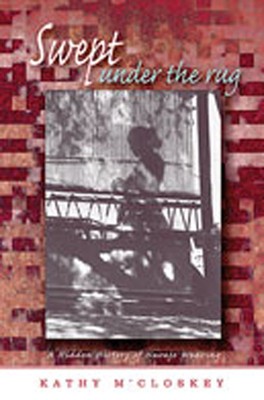
- Išsiųsime per 10–14 d.d.
- Autorius: Kathy M'Closkey
- Leidėjas: University of New Mexico Press
- ISBN-10: 0826328326
- ISBN-13: 9780826328328
- Formatas: 15.4 x 22.8 x 2.2 cm, minkšti viršeliai
- Kalba: Anglų
- Extra -15 % nuolaida šiai knygai su kodu: ENG15
Atsiliepimai
Aprašymas
Collected and highly valued all over the world, Navajo weaving has been the subject of many aesthetic and historic studies. Grounded in archival research and cultural and economic approaches, this new book situates Navajo weavers within the economic history of the Southwest and debunks the romantic stereotypes of weavers and traders that have dominated the literature.
Beginning with an analysis of trader archives revealing that nearly all Navajo textiles were wholesaled by weight until the 1960s, M'Closkey scrutinizes the complex interactions among artists, dealers, collectors, and museum curators that have facilitated the explosion in value of those old weavings. She also examines the production of Mexican copies of Navajo-style rugs, which in recent years has combined with the market for pre-1950 textiles to diminish the demand for contemporary Navajo weavings. Navajo patterns, she points out, remain unprotected by copyright because traditional designs have been in the public domain for decades.
Much of the exploitation M'Closkey delineates has been justified by the ethnographic classification of functional textiles as nonsacred crafts. But the author's conversations with Navajo weavers suggest that their motivations for weaving go far beyond economics. Weavers' feelings for hozho, the Navajo concept of harmonious beauty, encompass far more than any western concept of aesthetics. M'Closkey shows that the weavers' views of their work are marginalized when the work is treated as a collectible craft and culture is split from commodity.
No one who studies, collects, sells, or enjoys Navajo textiles (either genuine or knock-offs) can ignore this book. Sure to be controversial, it will be important reading for anyone concerned with the merchandising of Indian art.
EXTRA 15 % nuolaida
Kupono kodas: ENG15
Akcija baigiasi už 2d.14:40:54
Nuolaidos kodas galioja perkant nuo 10 €. Nuolaidos nesumuojamos.

- Autorius: Kathy M'Closkey
- Leidėjas: University of New Mexico Press
- ISBN-10: 0826328326
- ISBN-13: 9780826328328
- Formatas: 15.4 x 22.8 x 2.2 cm, minkšti viršeliai
- Kalba: Anglų
Collected and highly valued all over the world, Navajo weaving has been the subject of many aesthetic and historic studies. Grounded in archival research and cultural and economic approaches, this new book situates Navajo weavers within the economic history of the Southwest and debunks the romantic stereotypes of weavers and traders that have dominated the literature.
Beginning with an analysis of trader archives revealing that nearly all Navajo textiles were wholesaled by weight until the 1960s, M'Closkey scrutinizes the complex interactions among artists, dealers, collectors, and museum curators that have facilitated the explosion in value of those old weavings. She also examines the production of Mexican copies of Navajo-style rugs, which in recent years has combined with the market for pre-1950 textiles to diminish the demand for contemporary Navajo weavings. Navajo patterns, she points out, remain unprotected by copyright because traditional designs have been in the public domain for decades.
Much of the exploitation M'Closkey delineates has been justified by the ethnographic classification of functional textiles as nonsacred crafts. But the author's conversations with Navajo weavers suggest that their motivations for weaving go far beyond economics. Weavers' feelings for hozho, the Navajo concept of harmonious beauty, encompass far more than any western concept of aesthetics. M'Closkey shows that the weavers' views of their work are marginalized when the work is treated as a collectible craft and culture is split from commodity.
No one who studies, collects, sells, or enjoys Navajo textiles (either genuine or knock-offs) can ignore this book. Sure to be controversial, it will be important reading for anyone concerned with the merchandising of Indian art.




Atsiliepimai